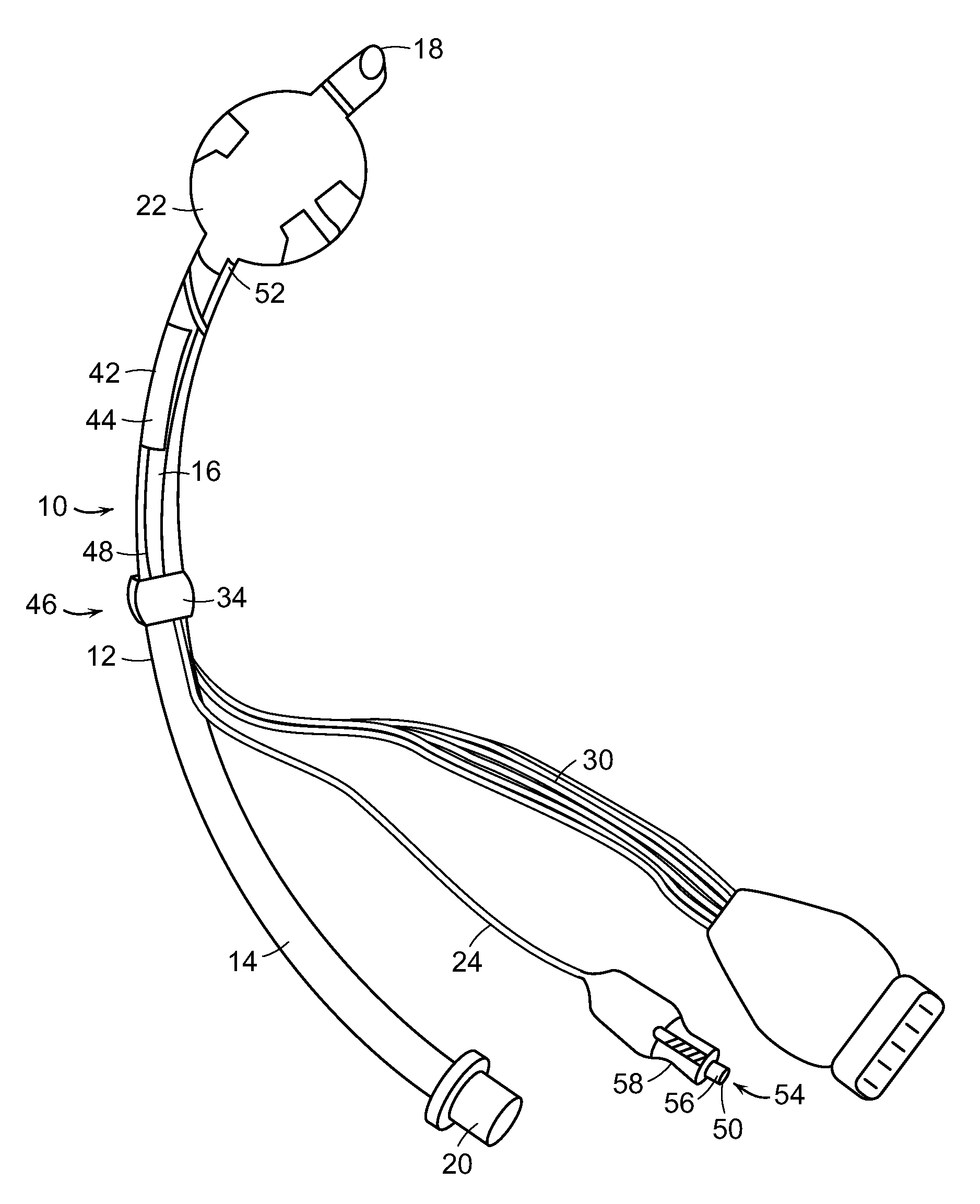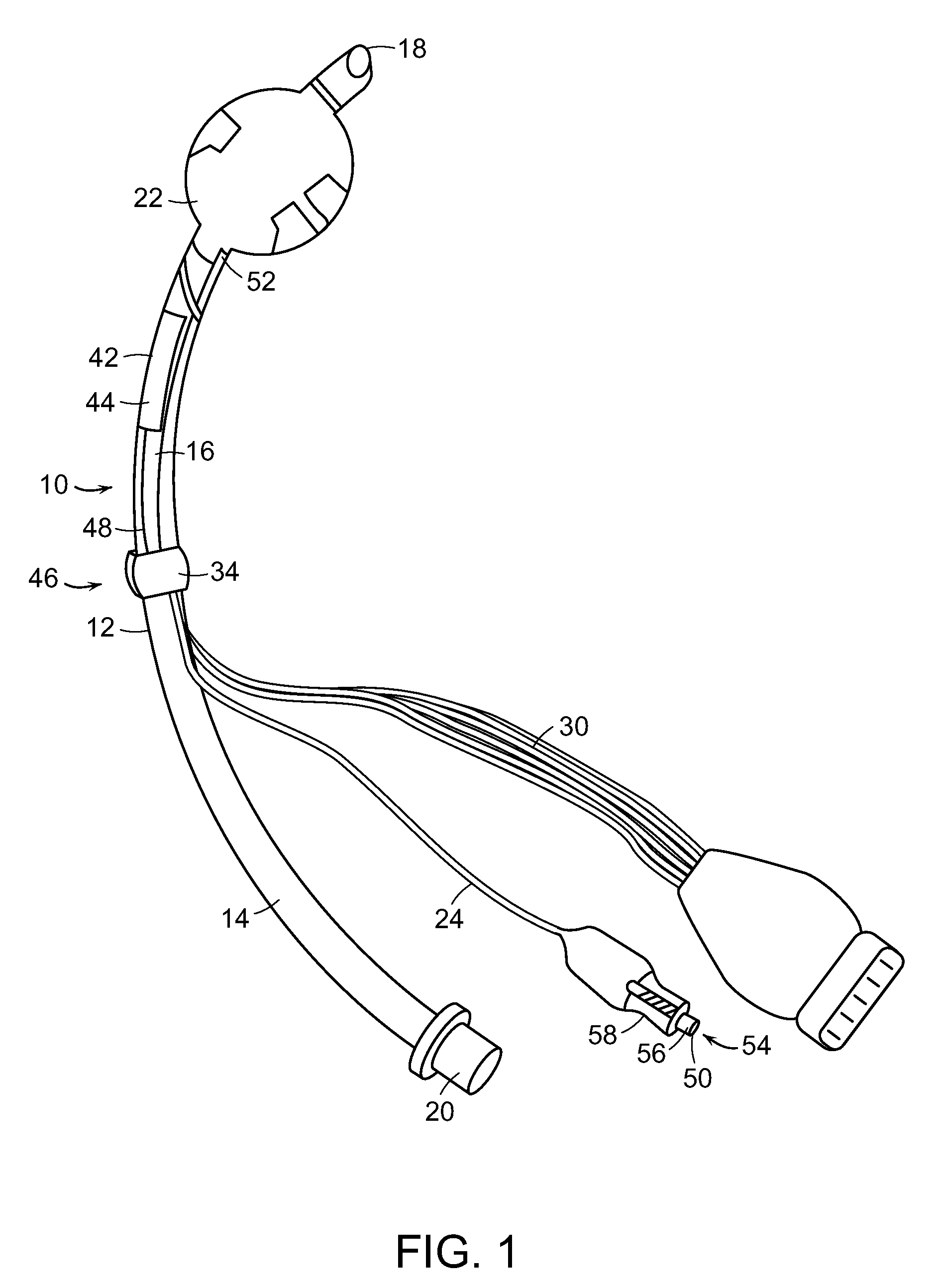Apparatus and Methods for the Measurement of Cardiac Output
a technology of cardiac output and apparatus, applied in the direction of catheters, packaged goods, packaged foodstuffs, etc., can solve the problems of more complex and riskier intubation process
- Summary
- Abstract
- Description
- Claims
- Application Information
AI Technical Summary
Benefits of technology
Problems solved by technology
Method used
Image
Examples
Embodiment Construction
[0025]In some embodiments described herein, the present invention relates generally to an apparatus useful as an endotracheal tube (also known as an intratracheal tube or ET tube). The endotracheal tube is useful in measuring physiological characteristics of a mammalian subject, particularly human subjects suffering from acute or chronic injury or illness. For example, the endotracheal tube is used to measure cardiac output in a mammalian subject. The endotracheal tube is inserted into the trachea, generally via the mouth, but sometimes through the nares of the nose or even through a tracheostomy.
[0026]The apparatus 10 for measuring a mammalian subject's cardiac output shown in FIG. 1 contains tube 12 having proximal portion 14 and distal portion 16. The tube 12 is generally formed of a medically approved synthetic polymeric material such as silicone rubber, polyvinyl chloride or polypropylene. See, U.S. Pat. Nos. 3,599,642 and 4,593,690, the contents of which are incorporated herei...
PUM
 Login to View More
Login to View More Abstract
Description
Claims
Application Information
 Login to View More
Login to View More - R&D
- Intellectual Property
- Life Sciences
- Materials
- Tech Scout
- Unparalleled Data Quality
- Higher Quality Content
- 60% Fewer Hallucinations
Browse by: Latest US Patents, China's latest patents, Technical Efficacy Thesaurus, Application Domain, Technology Topic, Popular Technical Reports.
© 2025 PatSnap. All rights reserved.Legal|Privacy policy|Modern Slavery Act Transparency Statement|Sitemap|About US| Contact US: help@patsnap.com



